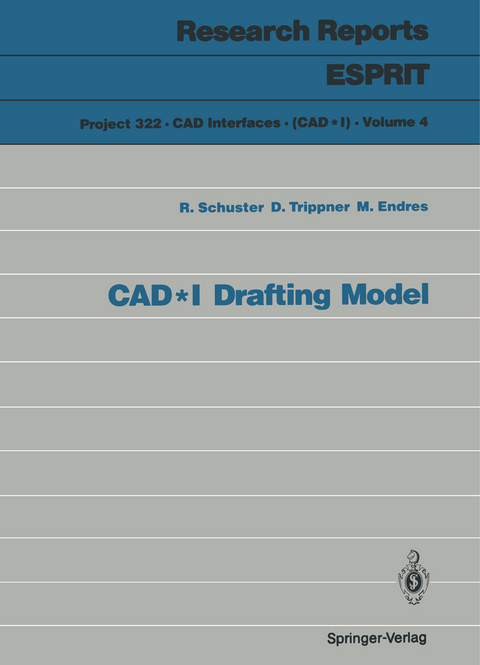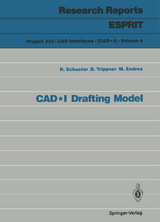CAD*I Drafting Model
Springer Berlin (Verlag)
978-3-540-52051-1 (ISBN)
1. Introduction.- 1.1. Interfaces for the Exchange of Product Definition Data.- 1.2. Approach to Classify Information Models.- 1.3. The Information Model for Technical Drawings.- 2. The Drafting Model.- 2.1. Requirements for the Development of the Drafting Model.- 2.2. Systematical Approach to the Drafting Model.- 2.3. The Basic Principles of the Drafting Model.- 2.4. Tools for the Description of the Drafting Model.- 3. Drafting Resources.- 3.1. Introduction.- 3.2. Drafting Resources FUNCTION Definitions.- 3.3. Drafting Resources ENTITY Definitions.- 4. Drawing Organization.- 4.1. Introduction.- 4.2. Drawing Organization TYPE Definitions.- 4.3. Changed ENTITY Definitions of IPIM_PRESENTATION_SCHEMA.- 4.4. Drawing Organization ENTITY Definitions.- 5. Dimensioning.- 5.1. Introduction.- 5.2. Dimensioning TYPE Definitions.- 5.3. Dimensioning ENTITY Definitions.- 6. Tolerance Representation.- 6.1. Introduction.- 6.2. Tolerance Representation TYPE Definitions.- 6.3. Tolerance Representation ENTITY Definitions.- 7. Shape Attributes Representation.- 7.1. Introduction.- 7.2. Shape Attributes Representation TYPE Definitions.- 7.3. Shape Attributes Representation ENTITY Definitions.- 8. Additional Remarks.- 8.1. Associativity Between Annotation Graphs and the Geometry Descriptions.- 8.2. Example.- References.
| Erscheint lt. Verlag | 22.5.1990 |
|---|---|
| Reihe/Serie | Project 322. CAD Interfaces (CAD*1) | Research Reports Esprit |
| Zusatzinfo | XII, 233 p. |
| Verlagsort | Berlin |
| Sprache | englisch |
| Maße | 170 x 242 mm |
| Gewicht | 452 g |
| Themenwelt | Informatik ► Weitere Themen ► CAD-Programme |
| Technik ► Maschinenbau | |
| Schlagworte | CAD (Computer aided design) • data structures • Datenstrukturen • Engineering Economics • Graph • ISO-Standard • mechanical engineering • Model • Modeling • Rechnerunterstützer Entwurf • Semantics • Standards |
| ISBN-10 | 3-540-52051-1 / 3540520511 |
| ISBN-13 | 978-3-540-52051-1 / 9783540520511 |
| Zustand | Neuware |
| Haben Sie eine Frage zum Produkt? |
aus dem Bereich




